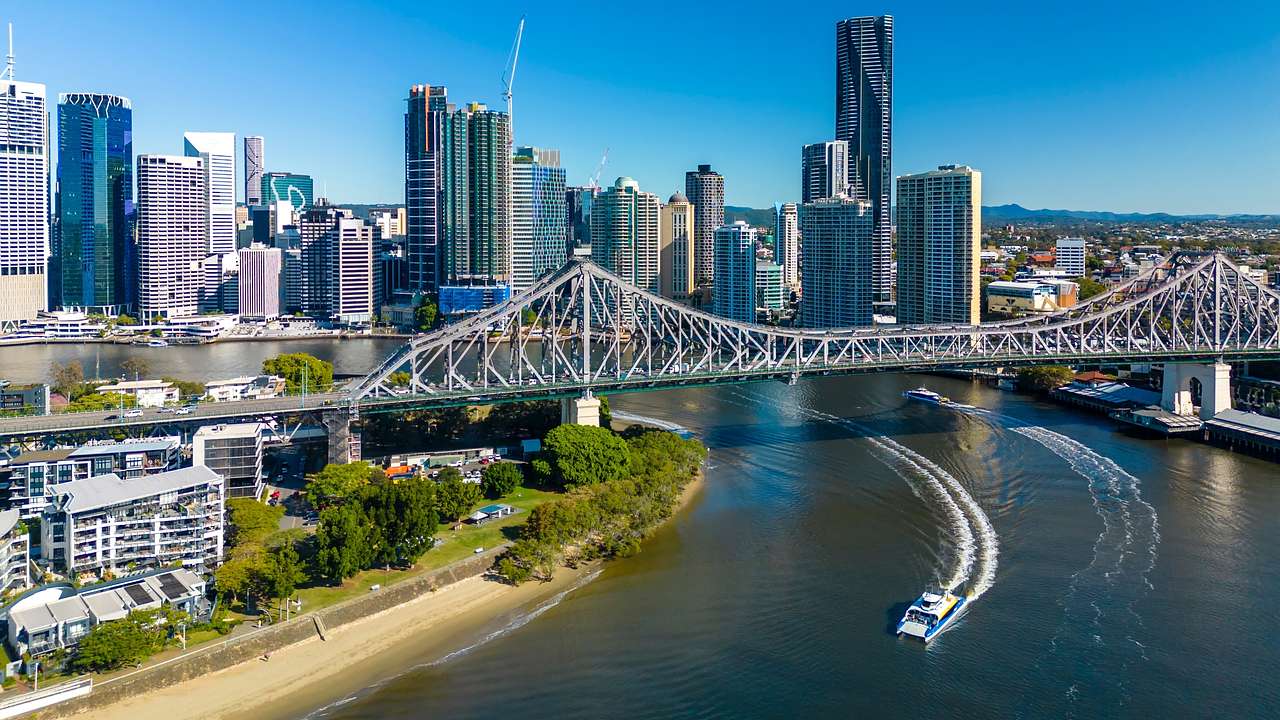Brisbane River

The Brisbane River, which is the longest in South East Queensland, Australia, passes through the city of Brisbane as well as the tributaries of Lockyer Creek, Bulimba Creek, Norman Creek, Oxley Creek, and Bremer River. Its way through the heart of Queensland’s capital city, is more than just a body of water; it is a living tapestry of culture, history, and identity. For centuries, this iconic river has served as a focal point for human activity, shaping the cultural landscape of Brisbane and leaving an indelible mark on the lives of its residents. In this exploration, we delve into the multifaceted dimensions of the Brisbane River’s cultural importance, uncovering the stories, traditions, and connections that bind communities along its banks.
Indigenous Heritage: A Sacred Connection
To understand the cultural significance of the Brisbane River, we must first acknowledge the deep spiritual and cultural connections forged by Indigenous Australians over millennia. For First Nations peoples, the river is more than just a source of water; it is a sacred entity, woven into the fabric of their traditional beliefs, stories, and ceremonies.
Key to Indigenous cultural significance is the concept of “country” – a holistic understanding of land, water, and spirituality that transcends Western notions of ownership and possession. The Brisbane River, known as Maiwar in the Turrbal language, holds a central place in Indigenous Dreamtime stories and creation myths, serving as a pathway for ancestral spirits and a source of nourishment for the land and its people.
European Settlement: Foundations of a City
With the arrival of European settlers in the 19th century, the cultural significance of the Brisbane River underwent a transformation, as colonial powers sought to impose their own values and ideals upon the landscape. The river became a vital lifeline for the fledgling colony of Brisbane, serving as a gateway for trade, transportation, and communication with the outside world.
European settlement brought profound changes to the cultural fabric of the Brisbane River, as new traditions, customs, and institutions were introduced to the region. Colonial architecture, street names, and landmarks along the riverbanks bear testament to this legacy, reflecting the enduring influence of British colonialism on Brisbane’s urban identity.
Urban Development: A City in Motion
As Brisbane evolved into a modern metropolis in the 20th and 21st centuries, the cultural significance of the Brisbane River continued to evolve, reflecting the dynamic interplay between tradition and progress. Urban development along the riverbanks gave rise to iconic landmarks such as the Story Bridge, South Bank Parklands, and Howard Smith Wharves, which have become emblematic symbols of Brisbane’s cultural heritage and identity.
The Brisbane River serves as a focal point for cultural events, festivals, and celebrations that bring communities together and showcase the city’s diverse cultural tapestry. From the annual Riverfire fireworks display to the Brisbane Festival and Indigenous cultural festivals such as the Yarrabah Band Festival, the river provides a stage for cultural expression and creativity that unites residents and visitors alike.
Environmental Awareness: A Call to Action
In recent years, the cultural significance of the Brisbane River has taken on new dimensions as communities grapple with environmental challenges such as pollution, habitat loss, and climate change. Environmental activists, artists, and community groups have mobilized to raise awareness and advocate for the protection and preservation of the river’s natural and cultural heritage.
Artistic expressions such as public murals, installations, and performances have become powerful tools for conveying messages of environmental stewardship and cultural renewal along the riverbanks. Initiatives such as the Brisbane Keepers and Clean Up Australia Day have engaged citizens in hands-on activities to restore and protect the river’s health and vitality, fostering a sense of shared responsibility and pride in Brisbane’s cultural heritage.
Conclusion:
The Brisbane River is more than just a waterway; it is a cultural lifeline that connects past, present, and future generations in a shared journey of discovery, resilience, and renewal. From its Indigenous origins to its colonial legacy and modern-day urban vibrancy, the river embodies the rich tapestry of Brisbane’s cultural identity and heritage.
As we navigate the currents of change and uncertainty, it is essential to recognize and celebrate the cultural significance of the Brisbane as a source of inspiration, connection, and belonging for all who call Brisbane home. By honoring the diverse traditions, stories, and values that flow along its banks, we can ensure that the Brisbane River remains a beacon of cultural pride and resilience for generations to come.
Know More about the Brisbane River.
What are The Religious Places of the Brisbane River?
When Did The Brisbane River Basin Become a Focus?
Where is The Brisbane River Located?
Who Were The Key Historical Figures and Civilizations of The Brisbane River?
How to Reach Brisbane River?




